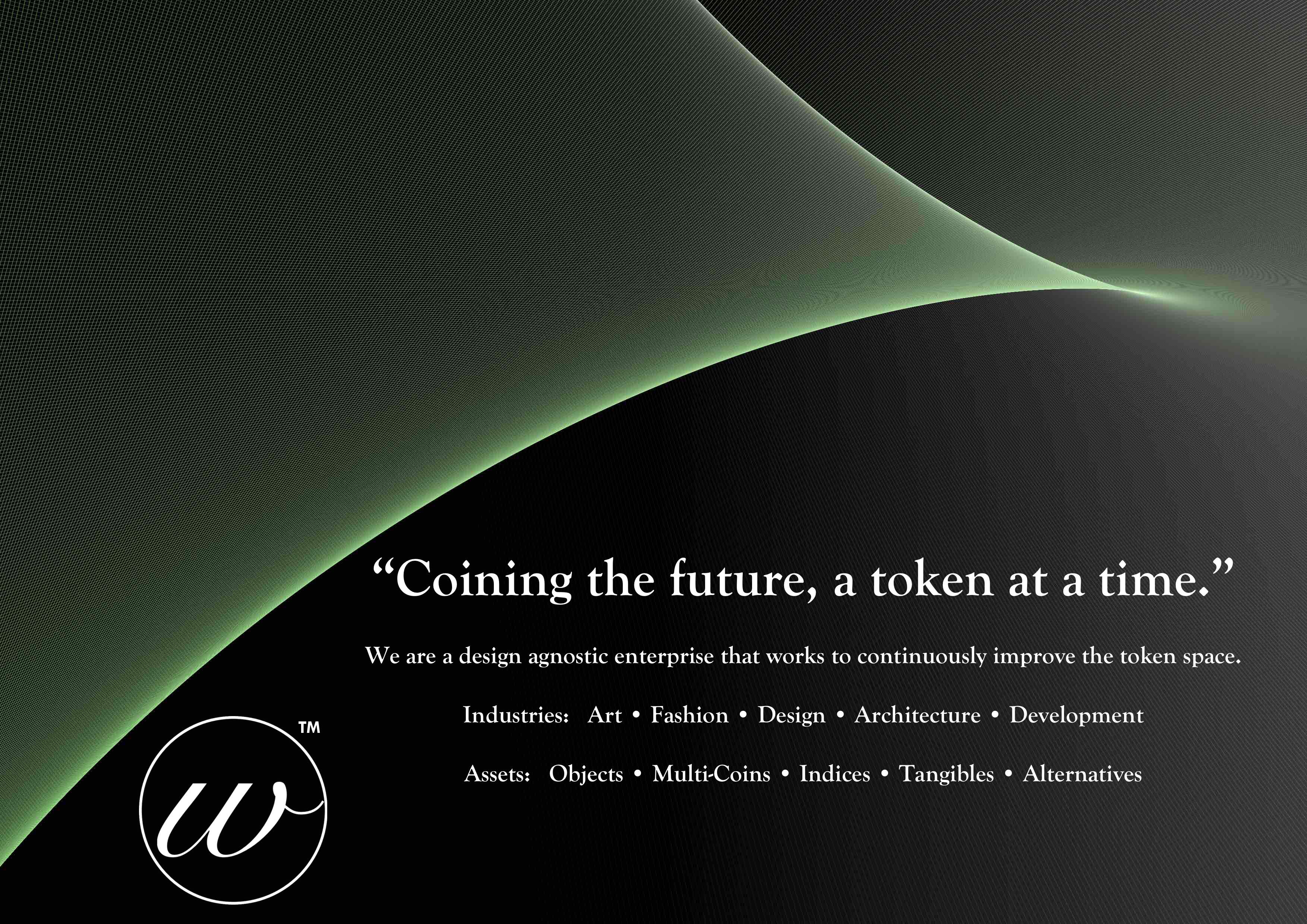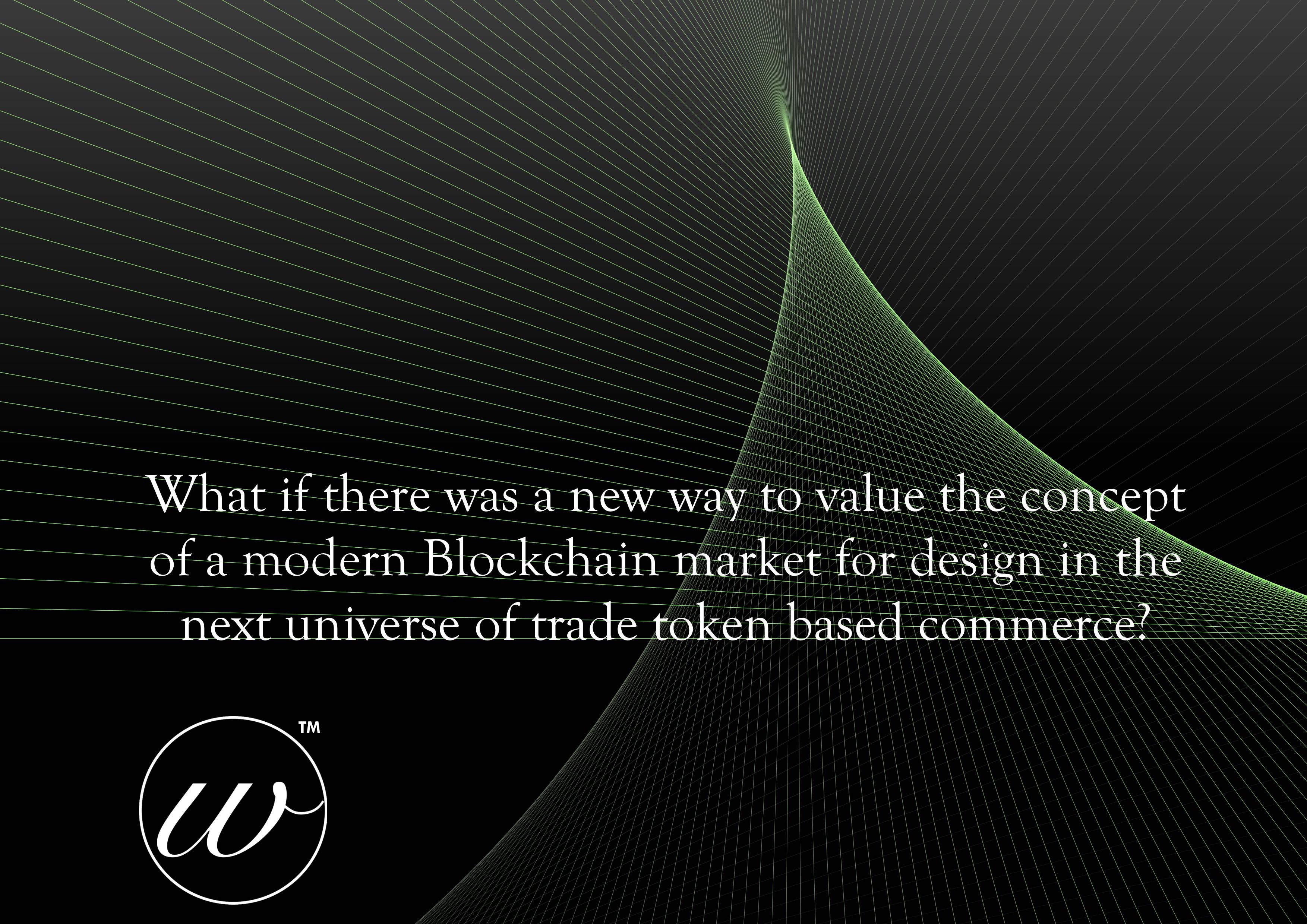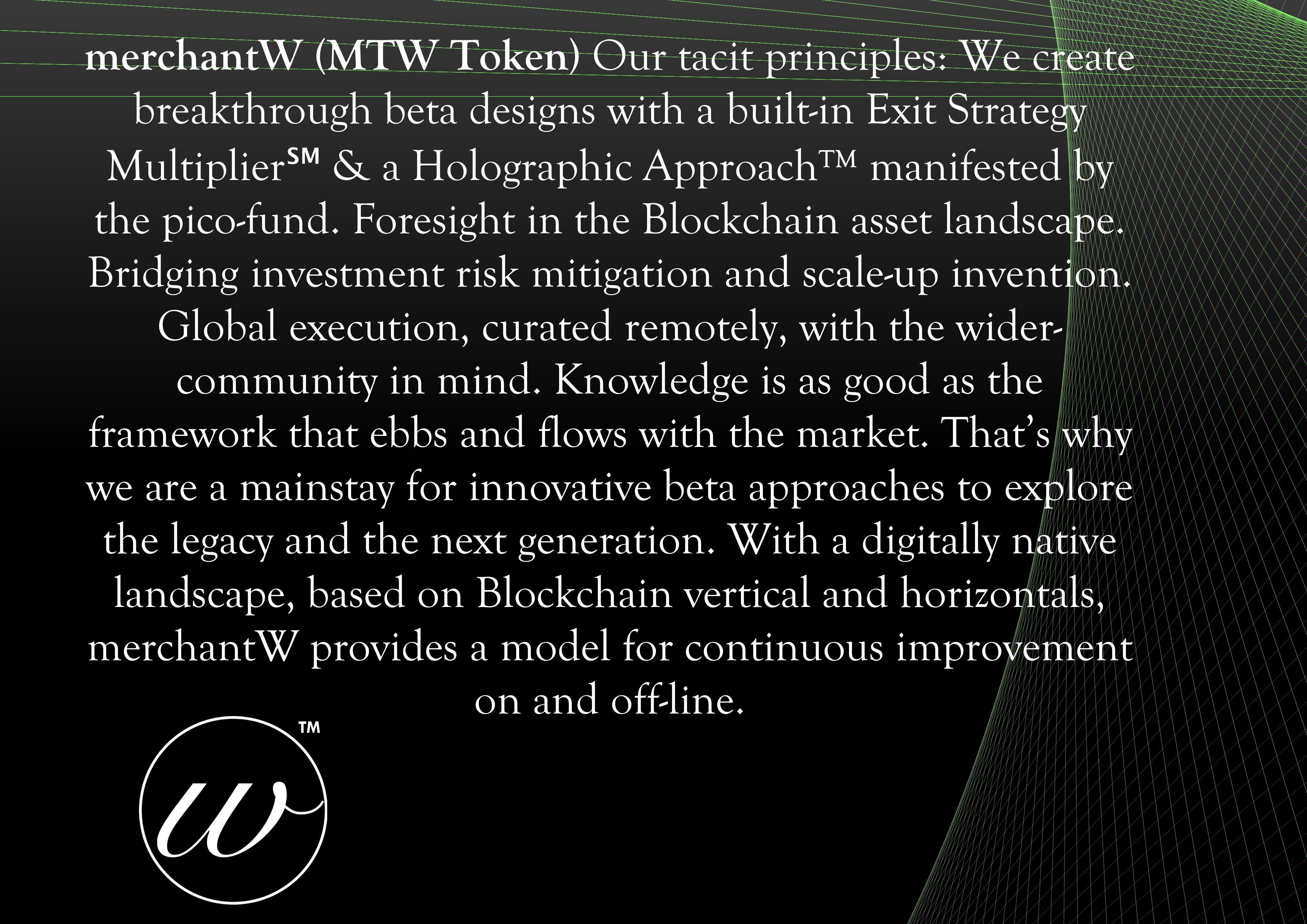
Some say that the later a technology arises, the better that’l be. In the case of the web and internet, the next rendition may not be believable, when you consider that the web is going from hyper visual, to hyper sensory. And for the commonplace designer, the limits of the textual web, eventually never reach any limit, as the condensed web becomes popularised, because of reader attention issues, in the personalised era.
This new evolution, is best described as the evolution of the token.
The aim of this white paper is to convey token elements of high tech design, in an easy to read format, which is accessible to English speakers and their dialects.
What makes a token? Historically they have been as a supplement to currency, or in some instances, they are currency (albeit a unique form), like in the cryptocurrency application.
Fast forward a few hundred years, and they have been essential in the video game centres that accepted tokens only, because of how systematic control works, for accounting purposes.
Now that tokens have been accepted into other technologic realms, like in email and internet accounts, they have proven that they provide faster access, because of how easily they intermingle with modern encryption techniques.
And the storyline continues, as goes the expression, “a token of appreciation”; tokens have been essential in the gift giving and accepting process, for people who want a gift to more flexible than giving merely cash or a tangible item.
These gifts, paved the way for virtual items, pre proliferation of blockchain and cryptocurrencies.
When thinking of the nature of token development, it is often not of thought of as being that important, against the other attributes of a crypto asset. But upon closer examination, a token could in fact be more important. Lets dive deeper.
The inner most diagrams of a token, can be explained simply, but executing their value versus FIAT currency, is much more complex.
Layering data points into an executable token, is why so many people are interested in what tokens can do.
Just like with a token contract, the reader or user has to be in agreement to proceed with an executable; consenting.
There’s no telling that as tokens become more widely accepted that the industries and sectors, which revolve around this game changing economic unit, creating, using, and trading tokens, will also become more adopted as well.
The combinations of tokens and their applications, is what really makes tokens quite special.
To the casual observer, the reasoning behind what tokens can be and what they cannot be, is the most important way to analyse this in the market.
For the web developer, tokens are bliss. They mesh inherently well, and are are small enough that they can become a part of the technologic stack, if need be.
What do you think is the number one reason, that people vote for tokens in a consensus of confidence?
Piece by piece, it is token parity, where a vast amount of innovation can occur.
The best use case of understanding what to do with a token, lays inside of the issuer and the user, as the point of contactual contract; maybe in finance, and maybe in gaming, and probably in utility.
So why the token evolution, and not revolution?
This is mainly because of how deep the history is, which defines itself. The infrastructure is there, on all dimensions, so there is no need for a revolution, only evolution(s).
You may decide that you’re not really missing the boat, with this one. One being the next wave of technology or trends in startups and scaleups. There is so much to be said, from a perspective of utilitarianism, as if you focus on that aspect of this industry, all in all, this is an interesting and uncompelling enough sector to get educated about. But this unattractive part of this utility, is exactly why it is so necessary to become an expert about; tokens are embedded everywhere already in society, and not just in finance, but in story and lore, all in all, areas of life, which help define what and who we are as citizens. Tokens are that important.
If there was any guarantee in business it would be with this method of measured transfer, as the antiquity involved, is in fact a surefire rationale for being involved with this representation, as opposed to other trading subjectives.
Refresh a few decades down the line in terms of development, and you’ll find that the usage of tokens has expanded greatly, from their quote and quote, humble beginnings.
Now they can notarised on the chain, represent a passport, or even hold more value than their cryptocurrency based non tokens.
Applying this knowledge to any application is how this document has been designed. Anyone involved with the internet, and the web, can scale their own venture, without a saturated, me, me, authoritarian view of things.
The question that has to be asked, is if you had one free token of anything, what would you perceive this as being? And if you had a hundred tokens of anything, what would this be? Conceptualising this type of ownership, does change the nature of the economic mind, but is important as we move further into the depths of the token and its remnants.
When you craft an idea, at optimum, the representing factor is a minimalist singularity; this is just like how tokens are created. As a notion is dwindled down to being a three sided artefact, if we are speaking about tokens, the comparison between ideas, can come into play, and the abundance of ideas and tokens can realise themselves, as being definitive scale based intangible and tangible assets.
For the purposes of clarity, when we speak about tokens, we’re mainly focused on their relationship to cryptocurrency or other forms of economic display.
If you had the chance, would you rather be given one dollar from your favourite nation, or would you prefer a token from your favourite cryptocurrency?
Which is more flexible than the next, and which can store more value, apart from a numerical quotient?
By analysing the market from a perspective of inner wealth and outer wealth, the alchemical consistency of what makes a token a token, can be analysed effectively, within the context of the cryptocurrency dimension.

More often than not, when you analyse a bit further, the search engine optimisation elements of usage of “token”, you’ll find that because of how isolated the definition is, already, over time, a token best describes token, at this stage of world history.
By defining the world around a token, as being such, the entire scope of the token world, can be examined as a macrocosm, which doesn’t need much nurturing to advance, but further clarification to evolve. This is the thesis of Token Evolution, the Next Technologix.
Now that the stage has been set for understanding the basis points for the world at large, the more commonalities which the reader may find, with, the, microscopic, field of view, the more the macro world view can make better sense, than what was initially conceived, without all of this claritive knowledge building.
Moving onto the next point of description, is that the token universe, is what the point of discussion should really be. As that is just how the deep linkages related to a token, really is; there’s that many facets to the token existence, even without cryptocurrency as a focus. This shows just how rich this history is in, advancing the innovations, which may never would have been realised, without this simplistic type of exchange, through rerepresentation.
From an indexing perspective, tokens are easily catalogued, as a singular layer on top of something else.
This is what makes them so fascinating. It’s not exactly what they call “wrapping”, or “covering”, but is what they call “sealing”. By using a sealing legend as an academic approach to what a token really does, using a seal, on top (or below, or to the side), of a token, a minimal amount of bloatware can exist, and we arrive right back at how utility drives the entire existence of a token.
Traditionally, used in security, or in a showcase mode, amongst other applications, when it comes down to how tokens are used across, cross pollinating industry, there are probably a dozen use cases of tokens being used, merely because of how accessible and three dimensional they exist, in verticals and horizontals, that typically wouldn’t make that much sense, given what they actually do in cryptocurrency, but at the end of the ballgame, they are popular in providing not just a tool, but also an academic ledger, because of what you can put inside of a token.
Be it code, or encrypted algorithms, the inner workings of a token, is the next most interesting part of what they are encompassed by.
They say that good things happen, for those that wait. For individuals involved with low tech, or no code movements, like blogging, being in tune with tokens, is exactly what they’ve been missing, in the greater scheme of things. This is because of how tokens are intermeshed with everything to do with to do with the economics of a blog. Some stay away from blogging, but if you look at the low cost involved, when a blogger does begin to get involved with higher tech, even after the fact, getting involved with tokens is easy. Just like how the industry is perceived on one level. But overtime, believe it, the only people who end up getting involved with tokens, are those that have not just the embedded wisdom in regards to tokens, but also the infrastructure.
The real reason that people get involved with innovation, is because they see something that excites them, or intrigues. And with the vast majority of participants being early adopters, anyways, regardless of their real interest, tokens provide a safe haven asset and class, and a safe place for users to learn from, because of the nature of the historical development, and how “friendly” tokens seem to be, when you look at things from a marketing perspective.
So how does a token actually work? And what does it cost to employ?
The one thing that can be said for this avenue of exchange, is that with the right application, the product works every time.
For what its worth, the maths behind a method of trade like this, is incredibly simple to digest, which explains why trading with said mechanism is so popular.
When the tide turns for utilising a type of building block in the entrepreneurial vision based like a token, then the value can be unleashed, little by little, and then in mass.
If you flip a token, many times, the token remains as one, which is an important statement to make, if you want to ensure that this type of monetary value is durable, and in most cases, more durable than a FIAT or cryptocurrency alone, because of the engineering behind the layering in circularity of its design.
No two tokens can be alike, because of how their design works. Sure you can print multiple copies of a token, but at the root level of understanding what a token is apart from another, their can be only a version of representation, which helps explain why they are so useful in trade.
Not too many parts of economics are like this, being that the replication qualities of a financial product, is what has gotten the investment industry into trouble recently, as the saturation of products that do the same thing, have seen individuals involved in traditional finance shift to the cryptocurrency industry, because of how innovative the trading of unique assets and their derivatives are easily accessible, while being different from each other because of how their creators work, who aren’t working for the man, but are the man (or woman), for that matter.
Each component of what makes tokens better because they are a differential variable in financial technology, is why the token market is flourishing with differentiation from both the production and consumption side.
Becoming knowledgable about implementing tokens in offerings like, the ITO (Initial Token Offering), or for that matter any offering, is where the smart money flows, when the question of where to put hard earned money is asked. There are a multitude of different Initial Something Offerings (ISO), but if you’re interested in the tokenisation of exchange, by printing tokens for another representation in itself of monies or currencies, then an ITO can create a very valuable and efficient way to generate not just interest, but new funds, via tokenised assets.

The other popular type of tokenisation is the NFT (Non Fungible Token), where a token represents an asset like an art piece, which can not be replaced, and is truly unique. While the purpose of this writing is to illuminate the token evolution, not its existing areas of popularity, with the right research of a NFT, a reader can explore unbelievable options in creative trading exposition.
To what end do tokens and the incumbent productions, need to square off as far as usage metrics? Could be that eventually tokens will serve as the only go to practicality for exchange before exchange mathematics.
Creativity is the biggest reason for the proliferation and success of tokens. Whether because of how creative they allow you to be, or because of how creative they allow all the various market players to be, it is this flexibility which serves as the greatest example of why people are attracted to them for a myriad of utility use cases.
Whatever the reason, getting involved with token economics is a good thing. Not just for your bottom line, but also for finding your purpose.
With each and every day token focused, in a month of focused learning, you’ll find that the endgame of optimum layering can occur, and the economics at hand, are optimised, with your tokens in cue.
The fun part about tokens is the gameplay factors that are involved.
Because a token rests at the base of hierarchal design, this means that the most possible interactions are made possible, because of its position.
It is benchmarking tokens against the field of other relative assets, which supports the greatest odds making, when market dynamics and their odds are concerned.
The fun part about tokens is that they come in all shapes and sizes and are essentially the best counterpart to the creative.
And because of these facets, the market is attracted to tokens, not just because of what they are and what they can be, but because of their overall value per installation.
Using fractal maths for understanding how to trade and create tokens is suggestive in the fact, that the real mathematics that lends itself to optimisation, is via fractal tokenography.
With their iconic nature, tokens serve as a gateway to more advanced designs in one way, and are served as being the primary designs of representation in another way.
Creating texts and graphics for tokens is a great way to get started with tokenisation, as is the folder organisation systems, which help create new orgs of tokens and their relationships with other data types.
The incorporation process which entitles tokens to being base point assets, is a critical activity in the procession, as everything starts with a company formation, when dealing with originations and trade.
One easy way to decipher many different types of tokens, is through classes; by separating tokens into different classifications, the tokens can be easy identified and shifted, as needed.
The most valuable part about token terminology, has to be with motivational incentives which provide a highway for generating more value, even when the tokens are at such an early stage that they hold little to no value.
By subsidising token voting, the true democratic results, can be revealed, and the course of token development can be voted for, fairly.
Some people believe that through spectral healing, that tokens can provide a better health reality, than without, and can be determined as being not just, utilities, but also as medicine.
The cool thing about tokens is when you start to introduce elements like cluster economics, which drive growth of smaller token groups, with diversified aspects that make other organisations clustered, and the tokens paired, with optimum entities.
When you think about the quotables that token derivatives can create, knowing that language is the best way to improve communications, it is the tokenised interpretations, which are easily translated into new quotes, which can be remembered for much longer, than non quotables.
With all of these adjective token alignments, the most important thing above all, is to remember the token knowledge that offers itself as crystal clear thinking over time.
Enriching this knowhow, with tokens, is a clear way for advancement, that by reading and then through practice of this text, the reader, just like you, can create instilled passages into their own creations.
As far as analysing what all this means and the ramifications of learning about this token platform, is where the analysis provided can lean itself towards sharing lessons learned and what is what, for further discussion.
The forensics involved is the more likely than not, field of research, that people want to know about; what exactly is what, and where does the trail of evidence lead, when concerned with what a token has provided to the market, and what they are, representative of further valuation.
What could replace tokens or are they irreplaceable?
Could the peak of token interest shift its existence into being a new financial product? Or could it be said that tokens are too valuable in history to meddle with as far as being a truly unique financial instrument?
